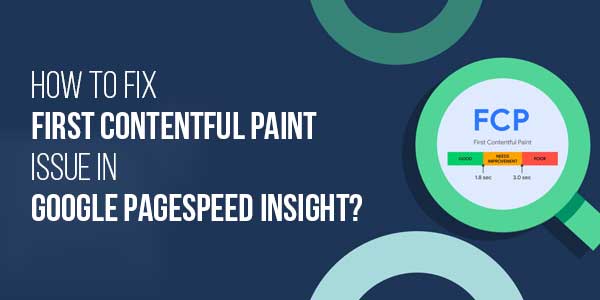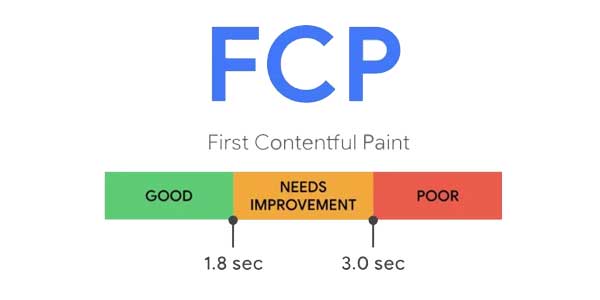
You know the feeling. You’ve poured your heart into a blog post, hit publish, and then, like a good digital citizen, you run it through Google PageSpeed Insights. The page loads, and there it is. A big, red, ugly number next to “First Contentful Paint” (FCP). Your heart sinks a little.
I’ve been there more times than I care to admit. It’s like getting a bad grade on a paper you worked really hard on. But here’s the thing I’ve learned after years of blogging and tinkering with website performance: FCP isn’t some mystical, impossible-to-solve problem. It’s actually a pretty straightforward conversation between your browser and your server. We just need to learn how to help them communicate better.
So, grab a coffee, and let’s break this down together. No complex jargon, no overwhelming lists of a hundred things to do. Just a practical, step-by-step guide from someone who’s fought this battle and lived to tell the tale.
Table of Contents
What Is First Contentful Paint, Really? (And Why Should You Care?)
Before we start frantically changing code, let’s get on the same page. What is FCP? Google’s official definition is: “The time from when the page starts loading to when any part of the page’s content is rendered on the screen.”
But what does that mean for you and me, the bloggers? Think of it as your website’s first impression. It’s the moment a visitor stops staring at a blank white screen and sees something – your header, a headline, an image, a loading bar. Anything.
Why is this so critical? Because we humans are impatient. If a site takes more than a few seconds to show any sign of life, we get antsy. We hit the back button. We go to a competitor’s site. A slow FCP directly translates to higher bounce rates. And we all know what that means for our traffic, our domain authority, and ultimately, our success.
It’s not just about user experience, either. Since page experience is a Google ranking factor, a poor FCP can quietly hurt your search engine visibility. It’s a silent traffic killer.
The Two Main Culprits Behind a Slow FCP
In my experience, almost every slow FCP issue boils down to one of two problems:
- Slow Server Response Times: The browser is waiting too long for your server to even send the first byte of data.
- Render-Blocking Resources: The browser has the HTML, but it’s being told to wait before showing anything because it needs to load and process CSS or JavaScript first.
Our mission is clear: tackle these two culprits head-on.
Step 1: Investigate Your Server (The Foundation)
Imagine your server is the kitchen in a restaurant. If the kitchen is slow and disorganized, the food (your content) is going to take forever to get to the table, no matter how fast the waiters are. The first place to look when your FCP is slow is your server response time, also known as Time to First Byte (TTFB).
You can see your TTFB right in PageSpeed Insights. If it’s high (say, over 600ms), your server is the primary bottleneck.
How to Speed Up Your Server Response
1. Evaluate Your Web Hosting
Be honest with yourself. Are you on a cheap, overcrowded shared hosting plan? I started on one, and it was fine for a blog with ten visitors a day. But as my Caching is like having a pre-made meal ready to go. Instead of your server frantically building every page from scratch for every new visitor, it serves a static, saved version. The difference is staggering. A CDN stores copies of your site’s static files (images, CSS, JS) on servers all around the world. So when a visitor from London loads your site hosted in Texas, they get the files from a server in the UK. This dramatically reduces the physical distance data has to travel, speeding up that initial response. Cloudflare is a fantastic and affordable place to start. “Fixing your server is like fixing the engine of your car. You can have the best paint job (design) and interior (content), but if the engine is faulty, you’re not going anywhere fast.” Okay, let’s say your server is now responding quickly. The HTML is flying to the browser. But the browser gets it and says, “Whoa, hold on. I need to load and parse these three massive CSS files and two JavaScript files before I can even think about painting the screen.” This is the render-blocking problem. Here’s how to deal with it. This was the single biggest fix for my FCP scores. “Critical CSS” is the minimal set of CSS rules needed to style the content that is immediately visible when the page loads (the “above-the-fold” content). Instead of making the browser wait for a huge external file, you inline this small bit of CSS directly in the How do you do it? Tools like WP Rocket have this feature built-in. You can also use online tools to generate your critical CSS and then manually inline it. It sounds technical, but it’s a well-documented process. For the CSS that isn’t critical (styles for below-the-fold content, or for elements like comment sections), you should load it in a way that doesn’t block rendering. Using JavaScript is often the biggest offender. Unless it’s absolutely essential for the initial page render, it should be deferred. While images and web fonts aren’t typically the *primary* cause of FCP issues (they load after the initial render), if they are massive, they can still slow everything down. And they definitely impact other metrics like Largest Contentful Paint (LCP). Custom fonts are beautiful, but they can be render-blockers. The browser might wait for the font to load before displaying any text (this is called the “FOIT” – Flash of Invisible Text). Here’s how to avoid that: Let me tell you about a post I wrote on what SEO is and how it works. It was a long, detailed guide with lots of images. My initial FCP was a painful 4.2 seconds. Ouch. Here’s what I did: From 4.2s to 1.5s. The page felt instant. My bounce rate dropped, and the post started ranking for more competitive terms. It was proof that this stuff really works. According to Google, a good FCP score is 1.8 seconds or less. A score between 1.8 and 3.0 seconds needs improvement, and anything over 3.0 seconds is considered poor. Aim for that green “good” range! They measure different things. FCP is about the *first* thing a user sees, which impacts perceived performance. LCP is about when the *main* content loads. Both are crucial Core Web Vitals. A fast FCP sets a positive expectation, while a fast LCP delivers the full experience. Absolutely. Each plugin can add its own CSS and JavaScript files, which can block rendering. It’s essential to regularly audit your plugins and deactivate any that are unnecessary. Quality over quantity is the key to maintaining a fast-indexing blog. Yes, indirectly. A CDN primarily improves Time to First Byte (TTFB) by serving content from a location closer to the user. Since TTFB is a major factor in FCP, a CDN can definitely lead to a faster First Contentful Paint. By inlining the critical CSS directly in the HTML, the browser doesn’t have to make a separate request to an external CSS file before it can start rendering the page. This eliminates a round trip, allowing the browser to paint content to the screen much sooner. You should defer non-essential JavaScript. However, if you have JavaScript that is required for the initial rendering of the page (which is rare for most blogs), it should not be deferred. For most analytics and third-party scripts, deferring is the way to go. Don’t obsess over it daily. A good practice is to run a check after making any significant changes to your site (e.g., adding a new plugin, changing themes). Otherwise, a monthly check-in is sufficient to ensure your performance hasn’t regressed. This is a good habit for overall blog page optimization. Yes, tremendously. Bloated themes with excessive features and poorly coded CSS/JS are a common cause of slow FCP. Opt for lightweight, well-coded themes from reputable developers. Speed should be a primary factor in your theme choice. Implement a good caching solution. For WordPress users, installing and configuring a plugin like WP Rocket or W3 Total Cache is the most straightforward and high-impact first step you can take. It addresses both server response and render-blocking resources. The quickest win is to install an image optimization plugin that automatically compresses new images and can bulk-optimize existing ones. Also, simply reducing the physical dimensions of your images (e.g., not uploading a 4000px wide image if it will only be displayed at 800px) makes a huge difference. Fixing FCP isn’t always a one-click solution. It’s a process of investigation and iteration. Start with the big wins: check your server and implement caching. Then move on to CSS and JavaScript. Don’t try to do everything at once. Remember, the goal isn’t just to get a green score in a tool. The goal is to provide a better, faster experience for the people who matter most: your readers. When your site feels snappy, people stay longer, read more, and are more likely to come back. And that, my friend, is what SEO and good blogging are all about. So, go open PageSpeed Insights. Don’t be scared of that red number. See it as a puzzle to solve. You’ve got this.2. Implement Caching (This Is Non-Negotiable)
3. Use a Content Delivery Network (CDN)
Step 2: Tame Your CSS and JavaScript (The Render Blockers)
1. Optimize Your CSS Delivery
Inline Critical CSS
<head> of your HTML. The rest of your CSS can be loaded asynchronously.Defer or Asynchronously Load Non-Critical CSS
preload or media="print" tricks can help. Again, good caching plugins can automate this.2. Defer and Minify JavaScript
defer attribute tells the browser to load the script in the background and execute it only after the HTML is fully parsed. This is perfect for most scripts.Step 3: Optimize Your Images and Fonts
Image Best Practices
width and height attributes on your images. This prevents layout shifts and helps the browser render the page more efficiently.Web Font Optimization
font-display: swap;: This CSS rule tells the browser to immediately display text using a system font until your custom font loads. It creates a “FOUT” (Flash of Unstyled Text), which is a much better user experience than invisible text.<link rel="preload"> to hint to the browser to fetch it early.
Putting It All Together: A Real-Life Example
Frequently Asked Questions (FAQs)
What is a good First Contentful Paint score?
Is FCP more important than Largest Contentful Paint (LCP)?
Can too many WordPress plugins affect FCP?
Does using a CDN help with FCP?
How does critical CSS improve FCP?
Should I delay all my JavaScript to improve FCP?
How often should I check my PageSpeed Insights scores?
Can my website theme slow down FCP?
What’s the easiest first step to improve a poor FCP?
Are there any quick wins for image optimization?
Wrapping Up: Be Patient and Persistent














Be the first to write a comment.